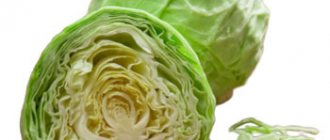Rosehip: benefits and harm; contraindications; chemical composition and calorie content; benefits for men, women and children; how to prepare and take the decoction; recipes for making infusion. The list of user requests is not limited to the specified questions, because everyone who has somehow learned about wild rose (second name) wants to get maximum information about the properties of this plant. In fact, rosehip decoction has medicinal properties, but in some cases it can cause harm to the body, therefore it is contraindicated in the presence of a number of diseases. The seed oil of this garden crop is widely used in cosmetology, as it can quickly solve problems with excessive dry skin, in which it is superior to sea buckthorn oil. Thanks to its unique properties and rich vitamin and mineral composition, the plant serves as a solution to many problems at once, and we’ll talk about this.
Dog-rose fruit
Chemical composition and calorie content of rose hips
The nutritional value of one hundred grams of rose hips is 109.0 kilocalories, this amount contains (grams/percentage of daily requirement, %):
- proteins/1.6/1.7;
- fat/0.7/1.0;
- carbohydrates/22.4/15.7;
- dietary fiber/10.8/54.0;
- water/60.0/2.2.
The chemical composition of the dried fruits of the plant is presented in the table:
| Vitamin/mineral | Content per hundred grams of product, milligrams | Percentage of daily requirement in one hundred grams, % |
| Retinol acetate | 0,434 | 48,2 |
| Beta carotene | 2,600 | 52,0 |
| Thiamine | 0,050 | 3,3 |
| Riboflavin | 0,130 | 7,2 |
| Kholin | 12,000 | 2,4 |
| Pantothenic acid | 0,800 | 16,0 |
| Pyridoxine | 0,076 | 3,8 |
| Ascorbic acid | 650,0 | 722,2 |
| Tocopherol acetate | 1,700 | 11,3 |
| Phylloquinone | 0,026 | 21,6 |
| A nicotinic acid | 0,700 | 3,5 |
| Potassium | 23,000 | 0,9 |
| Calcium | 28,000 | 2,8 |
| Magnesium | 8,000 | 2,0 |
| Sodium | 5,000 | 0,4 |
| Sulfur | 16,000 | 1,6 |
| Phosphorus | 8,000 | 1,0 |
| Iron | 1,300 | 7,2 |
| Manganese | 1,020 | 51,0 |
| Copper | 0,113 | 11,3 |
| Zinc | 0,250 | 2,1 |
The product is a “champion” in terms of ascorbic acid content, but despite the incomparable benefits, a negative effect of this component on tooth enamel cannot be ruled out, so it is better to consume rosehip decoctions through a straw.
Useful properties of rose hips
The rich vitamin and mineral composition explains a number of beneficial properties of the plant in the form of the following effects:
- immunostimulating;
- antiseptic;
- tonic;
- stimulating / affects brain activity;
- invigorating;
- anti-inflammatory;
- diuretic;
- wound healing;
- hemostatic;
- diuretic;
- choleretic.
A decoction of the fruit can be used for medicinal purposes, as well as in the prevention of diseases or to relieve fatigue. It is possible that a drink with wild rose may have a beneficial effect on brain activity.
People with stomach ulcers and other diseases (see below) should first familiarize themselves with the contraindications and consult a doctor before using them orally for one or another effect. It should be noted that seed oil and decoction of roots, leaves, and fruits have different types of effects on the human body. Read more about the benefits of rose hips for different categories of people below.
Benefits and contraindications of rosehip decoction for the body
A conversation about the beneficial properties of a plant for humans should begin with the fact that some of the vitamin and mineral substances are subject to thermal destruction, so preference should be given to infusions or not to exceed a temperature of 80 degrees when making a drink. This condition is a mandatory parameter when working with fruits.
Types of plant effects on the human body:
- immunostimulating;
- normalizing/for the gastrointestinal tract;;
- strengthening/for the cardiovascular system and the whole body;
- stimulating/applies to the respiratory system;
- regenerative/epidermis;
- tonic;
- anti-inflammatory;
- antibacterial;
- synthesis of blood particles/anemia;
- in the form of choleretic and diuretic effects / beneficial for the liver and gall bladder.
If we talk about healing properties, it is worth considering that they are possessed not only by fruits known to everyone from childhood, but also by:
- foliage;
- root part;
- shoots;
- seeds.
From the first three elements, infusions and decoctions are prepared that can solve many problems. Due to the high content of ascorbic acid - three fruits are enough to meet the daily requirement - a decoction of rose hips is indispensable during pregnancy as an effective remedy for colds, anemia and the prevention of vitamin deficiencies. For heart disease, you should prepare a decoction of rose hips and hawthorn.
Despite all the benefits, rosehip decoction has limitations in use - drinking the drink is prohibited for diseases such as:
[product_block id=”10988"]
[p[product_block id=”11005"]p>
- gastritis with increased acidity of gastric juice;
- peptic ulcer;
- thrombocytosis;
- tendency to thrombosis;
- endocarditis;
- hypervitaminosis of ascorbic acid;
- salt deposits and other abnormalities associated with water-salt metabolism.
The negative effect on the body is associated with the presence of a large amount of vitamin C in the chemical composition of wild rose, which can negatively affect the functioning of the gastrointestinal tract in the event of inflammatory processes. Rosehip affects blood clotting, which is not at all useful in case of poor circulation, which gives rise to the above contraindications.
Description of the rosehip plant
The rose hip (wild rose) is a typical representative of the Rosaceae family and an ancient ancestor of roses. In the wild, it forms thickets up to 2-3 meters high. In appearance, rosehip is a deciduous shrub that grows from 30 to 50 years. The intertwined, dark brown dense branches are covered with frequent thorns. The older the shoot, the fewer thorns it forms.
Single flowers up to 5 cm in diameter are formed on rosehip shoots. The shape is simple, consisting of 5 petals, or terry. The flowers form a delicate palette of colors: from white to bright pink, with a fresh aroma. During the flowering period, which occurs in May-June, the rose hip bush is shrouded in pink haze and looks elegant. Long-petioled, odd-pinnate leaves provide additional pattern.
Useful rose hips are formed in August, which gives the plant an additional decorative appearance. Red or orange rosehip berries adhere well to the plant and have the property of not falling off throughout the winter.
The fruit is conventionally called a berry; according to the botanical classification, it is a multi-nut:
- its diameter is 1-1.5 ms;
- inside there are small fruits covered with hairs;
- outside they are surrounded by a fleshy layer;
- The red-orange color comes from carotene (provitamin A).
Where rose hips grow in Russia, dense thickets are formed. Only up to 50 species of unique beneficial plants are known in the country. And beyond its borders, botanists counted 400 species. It occupies huge areas on the territory of our country and is rarely found only in the Black Sea region and Crimea. You can find rose hips almost anywhere on Earth. Thanks to its unpretentiousness, the shrub acquired the property of a cosmopolitan.
Rosehip is grown as an ornamental plant; it has the property of “transformation”; various hybrids have been created on its basis. Rose hips make wonderful hedges that reliably protect areas from uninvited guests. Thanks to its thorns and densely intertwined branches, it forms insurmountable thickets. The rosehip root system is branched and quickly grows overgrown with root shoots.
The Kuban Cossacks have an old legend associated with rose hips: a girl did not want to marry someone she didn’t love, and stabbed herself with a dagger. Drops of blood fell to the ground, and in this place a rosehip bush with berries resembling scarlet droplets appeared.
Types of rose hips
Rose hips are distinguished by the property of wide species variability; if we add to this many cultural forms, we get a complex, multi-stage taxonomy of the plant. Botanists cannot agree on intraspecific taxa.
The ancestor of various forms and species is the common rose hip - the most ancient in the genus. A common representative of the “pink world” is the wrinkled rose, the origin of which is associated with the Far East. The compact, one and a half meter tall rose hip bush is densely covered with large, wrinkled leaves. It is distinguished by long-lasting flowering and pink flowers with a delicate aroma.
Other known species include wild roses:
- prickly;
- red leaf;
- shiny;
- lovely;
- canine;
- fragrant;
- spiny.
It is impossible to list all the types, but each of them has its own characteristic features and properties. For example, Uzbek rose hips is one of the most famous beneficial plants, which is included in the herbal books of traditional healers.
Breeders create beautiful rosehip hybrids for decorating public gardens, parks, and gardens. But an interesting property has been revealed: the more decorative the hybrid looks, the lower its winter hardiness.
Blank
Rose hips are harvested before the onset of frost. Frozen berries become juicier and softer, but lose some of their beneficial properties. The collected fruits are dried in different ways, but it is most convenient to use dryers or ovens.
The berries are scattered on baking sheets in one layer, the temperature is set to +50-+75°C. Monitor the drying process so that the raw materials do not burn. You can dry the healthy polydruped fruits in several stages until they become hard and burgundy in color. It takes 3-4 hours for the raw materials to dry completely.
Sometimes during drying, rosehip seeds are removed, leaving only the juicy top layer. This option is convenient for brewing, but without seeds, some of the beneficial properties of the berries are lost.
Dried rosehip is stored in bags or hermetically sealed jars in a dry pantry; it does not lose its beneficial properties for 1-2 years. The medicinal properties of rosehip flowers are limited to a cosmetic effect. They are also prepared and dried to refresh the appearance and improve the health of the skin epidermis.
How to prepare and take rosehip decoction
The whole plant has healing properties, so you can prepare a decoction not only from dry or fresh fruits, but also from leaves and young shoots. Each part has a different set of vitamins and minerals, which explains the need to select the composition of the drink according to the type of problem being solved. General characteristics of the decoctions are presented in the table:
| Part | Benefit | Application |
| Escapes | Rheumatism therapy Treatment of radiculitis Elimination of abdominal pain Pronounced diuretic effect | Daily, before meals, 100 milliliters, no more than 4 times a day |
| Leaves | As an effective therapy:
Helps improve digestion, has diuretic and antibacterial effects. | No less than fifteen minutes before meals, no more than two tablespoons |
| Root | Removal of kidney stones, gall bladder Treatment of diarrhea, cystitis, rheumatism, gout, seizures, paralysis, metabolic disorders Relieving pain in the heart | A quarter glass before meals, no more than 4 times a day. Course duration 1-2 weeks |
| Fetus | Indications:
| No more than 200 milliliters per day |
It is necessary to prepare decoctions from any parts of the plant, taking into account all the recipe instructions - this will avoid mistakes, destruction of valuable substances, and loss of healing properties. You should not violate the norms and duration of the course given in the table: in folk medicine, the result depends not on the amount of the drink taken, but on the regularity of its use.
Rosehip is a powerful therapeutic agent, and the article is for informational purposes only, so if you have diseases, you should use the decoction only after consulting your doctor.
If there are no dry or fresh fruits, you can purchase rosehip extract from the pharmacy chain, which has the same positive effects, but is easier to work with - the required amount, according to the instructions, must be combined with warm water.
The decoction perfectly invigorates and refreshes our body
Rosehip root decoction
This drink helps dissolve kidney and gallstones. Before mixing the ingredients, measure out their quantities and prepare all the necessary accessories in advance. To prepare you will need:
- chopped rosehip root/two tablespoons;
- water/five hundred milliliters.
When the components are ready, start making the decoction:
- Wash the root of the plant and remove the peel.
- Grind the pulp using a small-diameter grater.
- Place the indicated amount of the resulting mass in a saucepan and combine with cold water.
- Put it on fire.
- When the mixture boils, cook over moderate heat for at least twenty minutes.
- Cover and set aside to steep for two hours.
- Pass through a sieve or cheesecloth.
Decoction of young twigs
Before mixing the ingredients, measure out their quantities and prepare all the necessary accessories in advance. To prepare you will need:
- chopped shoots/three tablespoons;
- boiling water/five hundred milliliters.
When the components are ready, start making the decoction:
- Rinse the young branches of the plant under running water.
- Dry with a towel.
- Grind, finely chop with a knife.
- Place the required amount of the resulting mass in a boiling container.
- Add boiling water.
- Put it on fire.
- As it boils, cook over very low heat for at least ten minutes.
- Cover with a lid and set aside to steep for one hour.
- Pass through a sieve or cheesecloth.
From rosehip leaves
Before mixing the ingredients, measure out their quantities and prepare all the necessary accessories in advance. To prepare you will need:
- dry leaves/one tablespoon;
- boiling water/one and a half glasses.
When the components are ready, start making the decoction:
- Place the leaves in a container.
- Add boiling water.
- Cover the container with a lid and leave for three hours.
From fresh berries
Before mixing the ingredients, measure out their quantities and prepare all the necessary accessories in advance. To prepare you will need:
- fresh berries/twenty pieces;
- water/one glass.
When the components are ready, start making the decoction:
- Sort the berries and wash under running water.
- Pour boiling water over the fruits of the plant and place in a cooking container.
- Add water.
- Put it on fire.
- Cook for at least ten minutes from the moment of boiling (very low heat, better cover with a lid).
- Remove from heat.
- Set aside for 24 hours to infuse.
From dry fruits
Before mixing the ingredients, measure out their quantities and prepare all the necessary accessories in advance. To prepare you will need:
- dried rosehip fruits/two teaspoons;
- boiling water/one glass.
When the components are ready, start making the decoction:
- Measure the fruits and place them in a coffee grinder to grind.
- Place in a thermos and connect with boiling water at a temperature of no higher than eighty degrees (about five minutes should pass from the moment the water boils).
- Leave for about eight hours. If necessary, you can get by with thirty minutes.
- Pass through cheesecloth.
Rosehip oil is one of the most popular cosmetics for face and hair care.
Properties and uses of rosehip oil
An oil is extracted from wild rose seeds, which has unique properties that are used:
- in the fight against inflammatory processes occurring in the oral cavity;
- to eliminate dermatoses;
- in the treatment of trophic ulcers, bedsores, eczema.
The cosmetic area is not spared from such a useful product due to its pronounced regenerative effect on the epidermis and the structure of the hair shafts. Clinical trials of the product began in the eighties of the last century - accounting was able to identify the following unique effects of the product:
- wound healing;
- removal of scars;
- elimination of scars.
Such world-shaking discoveries prompted scientists to further study the properties of rosehip oil, and by the end of the same century, data obtained after use by women over thirty-five years of age for sixteen weeks appeared and the following effects were revealed:
- improving the appearance of the dermis;
- refreshment;
- eliminating signs of aging.
Such a beneficial effect on the skin made the product very popular for the next two decades - the situation has not changed to this day. Can be used:
- internally/treatment of ulcers, gastritis;
- outward/cosmetic purposes.
The oil has an antidepressant effect, and is also useful for diseases of the digestive system - it solves the problem of decoctions of this valuable product, when the use of rose hips, rich in vitamins and minerals, is contraindicated. Despite the many positive effects, you should always consult a doctor before use.
Contraindications for use on the face:
- oily type of epidermis;
- acne;
- allergic manifestations.
Preparing rosehip infusion in a thermos
You should start preparing the drink by selecting dried berries: you must pay attention to their appearance. If mold appears on the fruits or they are black in color, it is better to discard such fruits. When the fruits are ready you need:
- Rinse the infusion container (thermos) with boiling water.
- Wash the dried fruits (you will need seven pieces) with running water.
- Place the fruits in the prepared bowl.
- Add boiling water in the amount of six hundred milliliters.
- Close the lid of the thermos and leave for at least eight hours.
To enhance the anti-cold effect, you can prepare an infusion with ginger in a thermos, and for liver cleansing - with oats in a thermos. For a general strengthening effect, it is enough to drink green tea with rose hips every day.
Methods for storing dried rose hips
High-quality dried berries retain their beneficial properties for two to three years, but only if stored correctly.
First of all, forget about plastic bags once and for all. This material completely blocks the access of air, as a result of which the berries begin to “suffocate” and mold appears on their surface.
The ideal containers for storing rose hips are cardboard or paper bags. Their bottom should first be lined with paraffin paper.
Another option for properly storing rose hips is in bags made of natural fabric. It is best to choose linen - it “breathes” perfectly, so mold will not threaten your supplies.
Glass jars are also suitable for storage, but under one condition: they should not be sealed. Use plastic lids, in which holes must first be pierced with a hot awl. If you don’t have lids on hand, cover the containers with gauze folded in three layers.
Regardless of what kind of container you choose to store dried fruits, place it in a dark place with good ventilation. Please note that rosehip is highly susceptible to foreign odors and easily absorbs them. Therefore, containers with dried berries should not be placed near products with intense aromas.
Medicinal properties of rose hips
For pancreatitis
The plant has undoubted benefits for pancreatitis, because rosehip reduces cholesterol, has a choleretic effect, and eliminates spasms. It is prohibited to use during periods of exacerbation of the disease.
For the liver
The pronounced choleretic effect of drinks with the plant helps improve liver function. Rose hips contain vitamin substances that can complement the structure of the cells of an organ such as the liver and prevent the formation of adipose tissue.
For the kidneys
The diuretic effect on the body and the ability of a drink with wild rose to destroy stones formed in the kidneys and gall bladder make it healing for the kidneys.
For diabetes
If you have this disease, doctors recommend the use of rose hips due to its rich vitamin and mineral composition and ability to reduce the amount of cholesterol in the blood.
For immunity
A drink made from the fruits of the plant has a pronounced immunostimulating effect during colds, because three berries contain the daily requirement of ascorbic acid. To treat diseases, it is recommended to consume one hundred milliliters of rosehip decoction four times a day. Do not overuse - it is not advisable to use it for longer than eight weeks.
Infusions improve immunity
Rose hip infusion recipes
Tea with honey and rosehip
Before mixing the ingredients, measure out the quantities and prepare all the necessary accessories in advance. To prepare you will need:
- dried berries/twenty pieces;
- honey/fifteen grams;
- lemon juice/five grams;
- boiling water/two hundred milliliters.
When the components are ready, start making the infusion:
- Grind the fruits in a coffee grinder.
- Combine the resulting powder with water.
- Place the mixture on the fire and cook for at least ten minutes after boiling, covering with a lid.
- Set aside for ten minutes to infuse.
- Strain.
- Add honey and freshly squeezed lemon juice.
Harm and contraindications of rose hips
Despite its beneficial properties, wild rose is not without its disadvantages:
- negative impact on tooth enamel in the form of destruction;
- side effects if the recommended amounts per day are not observed.
These defects are completely correctable, because it is enough to follow the instructions for the daily intake and use a straw for drinking.
Rosehip helps to increase the coagulability of blood particles, which people with an increased tendency to thrombophlevititis should pay attention to and should not use products based on this plant. Further use is contraindicated when symptoms of individual intolerance in the form of allergic reactions are identified. If these or other deviations are present, you must first discuss the possibility of use with your doctor or therapist.
Possible pests of rosehip stocks
In any supplies - muesli, nuts, cereals, dried fruits - sometimes uninvited guests appear: fruit moths, roseate long-tailed seed eaters, mealyworms. To prevent this from happening, store dried fruits in an airtight container. “Experienced” recommend using pillowcases, linen bags and parchment sugar bags. This is what our great-grandmothers did, who had never even seen a glass jar with a sealed lid. And, of course, do not stockpile food for years; do an inspection every six months and throw away contaminated food. Wash kitchen cabinets, especially door hinges and corners. On the kitchen shelves, place sachets with pelargonium (geranium) or lavender, orange peels and glue special anti-moth plates (do not forget to replace them every six months).
FAQ
How much rosehip decoction can you drink per day?
When determining the daily norm, you should take into account the age category, milliliters:
- no more than two hundred – adults;
- no more than a hundred are children.
It is important to consider not only the daily volume, but also the purpose of use:
- weight loss - one hundred milliliters before meals;
- increasing immunity - no more than four times a day, one hundred milliliters;
- improving the absorption of minerals (calcium, iron) – two hundred milliliters before bedtime once a day;
- choleretic effect - two hundred milliliters before breakfast.
Thus, depending on the tasks, the daily dose can be consumed immediately or divided into several times. You should not use this remedy without breaks - the maximum duration of the course is eight weeks, the minimum is three.
How long should rosehip decoction be stored?
The finished decoction of rose hips can be stored under normal conditions for no longer than eight to ten hours due to the possible fermentation process. To increase the shelf life of the product, you should pour it from a thermos into another container in the morning, cover it with a lid and put it in the refrigerator. Under such conditions, the drink retains its properties for no longer than forty-eight hours.
When to collect rose hips
The fruits are collected when they are not fully ripe, but when they are still hard and shiny, but already bright red or dark orange in color.
For better preservation when harvesting, you need to leave the stalk and receptacle. If you collect frozen rose hips, the fruits will be soft, easily crushed and quickly spoil. But if you want to get a sweetish drink, on the contrary, it is better to start harvesting in the second half of October; the fruits after frost are less sour. From an adult bush you can harvest 2-5 kg of fruit. The day before picking, wash the bush with a hose - do not wash the fruits before harvesting and drying. October 1 is the day of Arina the Rosehip. Rose hips collected on this day were considered the most useful.
Reviews
According to average statistics of data from different sites on customer opinions, the rating of rose hips as an effective remedy for colds is 5.0 points out of a possible 5.0. The plant is recommended by 100% of satisfied customers, which indicates beneficial properties for the human body.
Maxim, 29 years old
In the spring, after working at the dacha, I discovered that the skin on my hands was not just dry, but began to crack severely. I found information on the Internet that you can solve the problem with rosehip oil. I rubbed it into problem areas for two weeks and the result was healthy skin. I recommend.
Yuliana, 34 years old
Once upon a time, in our childhood, my mother and my brother spoiled me with rosehip decoction. Now I also drink so as not to get sick and it helps. It is better to drink through a straw to avoid damaging tooth enamel. I recommend.
Yana, 25 years old
I drink rosehip decoction in two-week courses, combined with regular use of hair and face masks with oil from the same plant. After three years of use, I can note an improvement in the appearance and condition of hair, nails, and facial epidermis. I recommend for purchase and use.
Distribution of the plant in nature
About 400 varieties of rose hips are known throughout the world, mostly growing only in a certain area, and there are tens of thousands of cultivated varieties.
More than half of the species grow in Russia and neighboring countries.
The Himalayas are considered the birthplace of rose hips. Dense thickets of shrubs can often be found in the most favorable conditions for it in the Mediterranean. The culture has become more widespread in the forest part, as well as along river ravines and wet meadows, steppes and plains of the temperate zone and subtropics of the Northern Hemisphere, as well as in some mountainous areas - throughout Russia, the Caucasus, Europe and Central Asia.
The plant is not picky about soil and grows well in loamy, sunlit places of moderate humidity, so different types of rose hips are found on all continents except the Arctic - from the Arctic Circle to the American continents, Australia and New Zealand.
conclusions
- Rose hips are rich in vitamins and minerals; three berries contain the daily requirement of ascorbic acid.
- The whole plant is useful: decoctions can be prepared from the root, fruits, twigs, and leaves.
- A pronounced immunostimulating effect, stimulation of brain activity, elimination of fatigue, tonic effect on the body are not all types of beneficial effects on the body.
- Due to the high content of ascorbic acid, systematic consumption of drinks with rose hips can lead to the destruction of tooth enamel, so it is better to use a straw.
- The product has contraindications, so you should consult your doctor before use.
Apple
Rose hips of the Apple variety usually do not grow higher than 1.2 m, however, the yield is not inferior to tall varieties. The flowers, like the fruits, are dark red. The rose hips of this variety are large and often grow in groups of 5-7 pieces. They have a flat-round shape and a sweet and sour taste. A bush with ripe fruits looks very elegant.
| Purpose | Plant height | Fruit ripening | Winter hardiness |
| Up to 1.2 m | From mid-August | High | |











